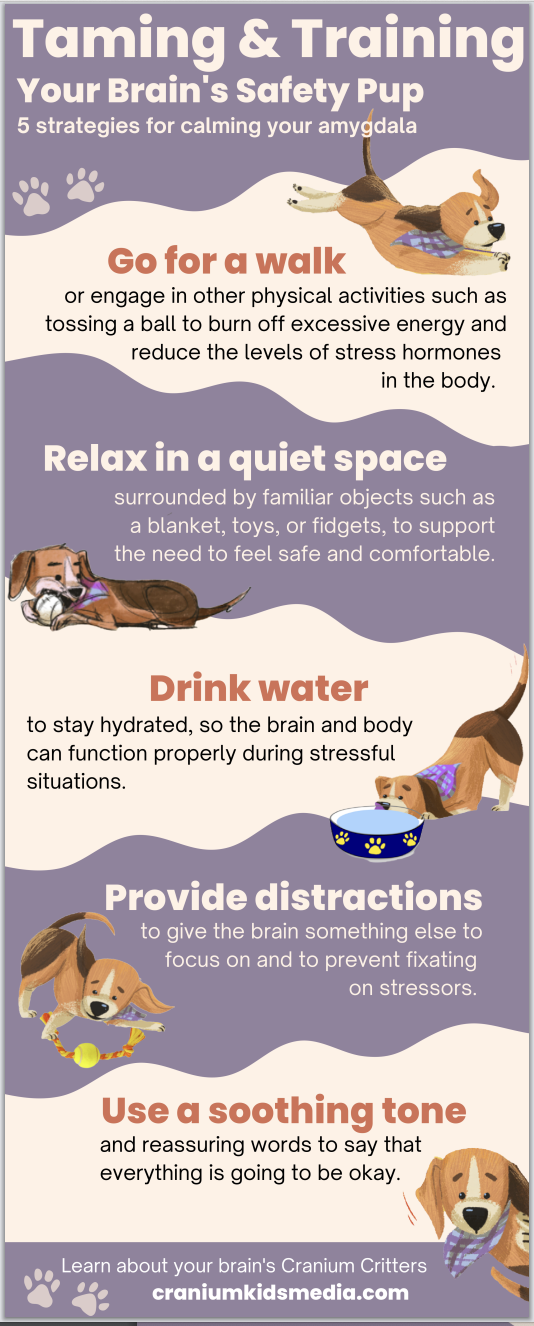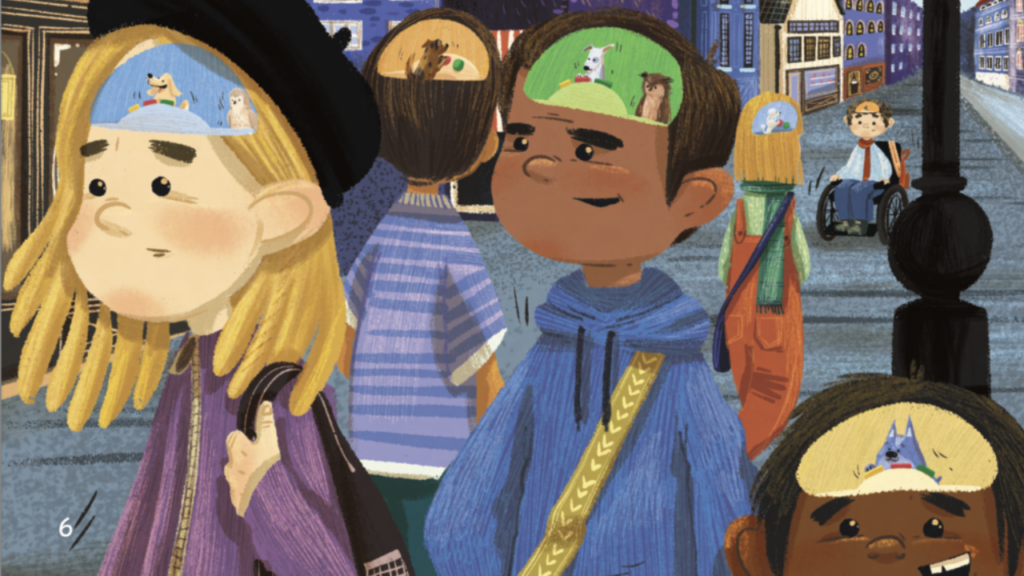Do you ever wonder what’s happening in your brain when you experience strong emotions? How can understanding the inner workings of the brain empower children (and adults) to better manage their thoughts, feelings, and actions? Let’s explore the fascinating world of the brain and how teaching children about its functions can give them the tools they need to control their emotions and succeed in life.
The Brain's Intricate Dance
Imagine your brain as a dynamic duo of Cranium Critters: the safety pup and the wise owl. The safety pup, representing the amygdala, acts as a vigilant guard dog, always on the lookout for danger. Its ability to react swiftly is essential when genuine threats to safety arise. In these moments, there’s no time for the wise owl to ponder; immediate action is necessary to protect us.
Meanwhile, the wise owl, symbolizing the prefrontal cortex (PFC), is the brain’s mastermind for decision-making and problem-solving. When the safety pup is calm, the wise owl operates efficiently, and we can think clearly. But when stress or perceived danger arises, the safety pup takes over, leading to impulsive – and sometimes unhelpful – reactions.
The Safety Pup's Bark
Understandably, the safety pup can sometimes misinterpret situations as threatening, just like a dog barking at a friendly delivery driver. With guidance and practice, children can learn to distinguish real threats from false alarms and train their inner safety pup accordingly.
Training the Safety Pup
Calming the anxious amygdala involves techniques similar to soothing an anxious dog. These include physical activities to burn off energy, finding comfort in familiar surroundings, staying hydrated, providing distractions, and using a soothing tone of voice. These practices empower children to take control of their emotions and optimize their problem-solving abilities.
Emotion Regulation as a Skill
Just like any other skill, emotion regulation is learned and developed over time. It requires teaching, practice during moments of calm, and support during intense emotional experiences. By incorporating emotion regulation exercises into daily routines and creating a “Pause Place” (as described in Cranium Critters: Paws at the Pause Place), children can learn to reduce stress and regain control when emotions run high.
Little Life Lessons • BIG Life Skills
Teaching children about their brains and emotions is a powerful way to equip them with essential life skills. By understanding the brain’s inner workings, including the quick response of the safety pup when genuine danger threatens, and practicing emotion regulation, kids gain the ability to control their thoughts, emotions, and actions. This knowledge sets them on a path toward academic and life success, fostering resilience and empowering them to face any challenge that comes their way.
Watch this Lesson on YouTube
Books on This Topic

Cranium Critters: Paws at the Pause Place
Scout the brain’s safety pup, and Einstein the wise owl offer a fun and informative way to teach children about managing their emotions and stress. The Cranium Critters help children to understand and better manage their own emotions and reactions to new or uncomfortable situations. A valuable resource for kids, parents, and educators.
Sometimes I’m Bombaloo
Explore big emotions and tantrums in this heartwarming story. Kids and adults can relate to Katie as she describes how she first tries to hold back the tears and the pushes, but then Bombaloo takes over and she loses it! With love and understanding from her mom, she learns to calm down and be herself again.
Grumpy Monkey
Jim Panzee is in a terrible mood for no good reason. His friends have lots of suggestions for how to make him feel better. But Jim can’t take all the advice…and has a BIT of a meltdown.
Listening to My Body
This is an engaging and interactive book that guides children through the process of naming their emotions and the physical sensations accompanying them. Teaching kids to tune into their bodies and name their feelings is a foundation for emotional regulation.
Visiting Feelings
The book stresses that feelings are neither bad nor good, they just are. Welcoming your feelings in, and actually making friends with them, is the best way to learn more about yourself and what your emotions are trying to teach you. A “Note to Parents” provides more information about emotional awareness, and suggests ways to incorporate mindfulness practices into your family’s daily routines.
I’m Happy-Sad Today
This delightful picture book helps children make sense of mixed-up emotions. I’ve used it for SEL lessons with all my 3rd graders, who could relate to the concept of experiencing more than one emotion at the same time. We paired this book with activity which involved creating names for mixed-up feelings.
When Sophie Gets Angry . . . Really, Really Angry
Young Sophie gets angry when her mother forces her to share her toy gorilla. After she kicks and screams, she eventually runs outside into nature and sits in a tree and calms down. Gradually, a calmer Sophie begins noticing birds and ferns. When she returns home, relaxed again, her sister has abandoned the gorilla in favor of a tabletop puzzle.
A Little Spot Emotion Coach
All of our Feelings and Emotions could use some coaching from time to time! This fun and colorful story shows how easy it is to be an Emotion Coach and manage your team of Feelings and Emotions SPOTS! I love using these books to teach students how to identify and cope with their emotions.


